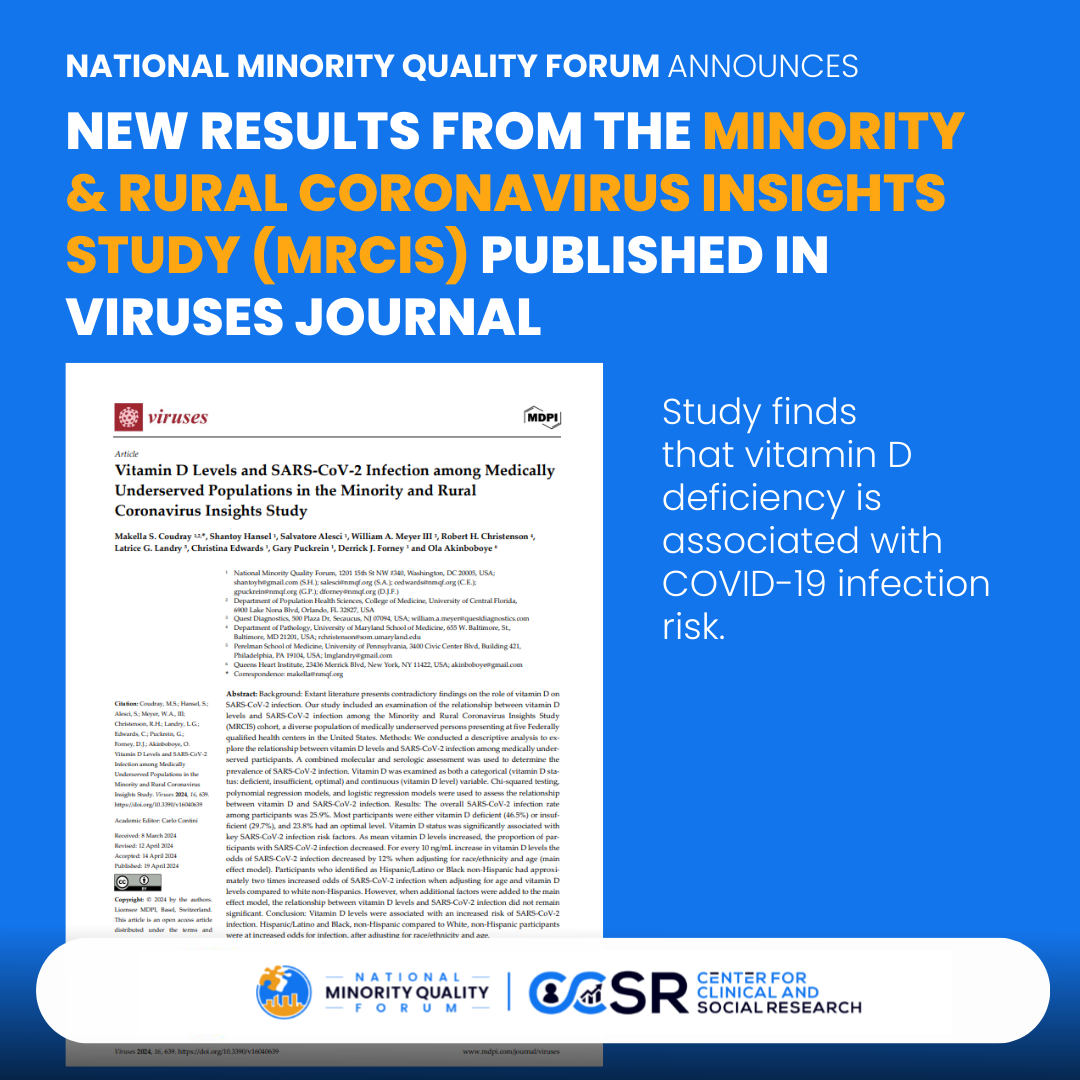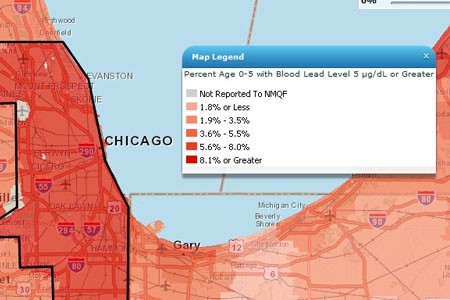
May 09, 2024
By Akeia Blue
Linking Vitamin D and COVID-19 risk: New Insights from the National Minority Quality Forum
Read More

June 27, 2012 | WASHINGTON D.C.
The National Minority Quality Forum Launches Lead Risk Index
Protecting children from lead poisoning
Parents, healthcare providers and policy makers now have a new Web-based tool to research and better understand the risk for lead poisoning at zip code-level granularity. Launched today, the Lead Risk Index from the National Minority Quality Forum (the Forum) allows users to research lead exposure levels across the country. The Index combines a flexible user interface with a proprietary risk model that incorporates currently available data from the Centers for Disease Control and Prevention (CDC), including the National Health and Nutrition Examination Survey (NHANES) and state blood level surveillance data, to provide access to comprehensive information, not available to the public previously. As additional data becomes available, the Forum will continue to expand the information offered through the Index. The Lead Risk Index is the latest in a series of health indexes created by the Forum to enable users to understand incidence and prevalence of disease on a national, state and local level.
“It’s important that parents know where to go to find out how at risk their children truly are,” explains Gary Puckrein, PhD, president and CEO of the Forum. “Before we created the Lead Risk Index, there was no way for clinicians, parents, or other advocates to get a perspective of lead risk from the national to the local level. Now the public can pinpoint areas of the country where children are most at risk for lead poisoning. This is essential to targeting public health resources, to finding children who are exposed to lead, and to preventing future exposure through primary prevention.”
The Lead Risk Index charts the estimated number and prevalence of children under age six with blood lead levels greater than 5 mcg/dL (the new CDC reference level for lead exposure) as well as the previous level of 10 mcg/dL. It also maps the estimated average blood lead levels of children across the U.S. Because many children who are at risk are not tested, the index also provides information on housing—as older homes with deteriorating lead-based paint are a primary source of lead exposure. Data points available include the percentage of houses built before 1980 and the estimated number of children under age six living in these homes.
High-level findings of the Lead Risk Index include:
Nationally, an estimated 3.18% of children under age six (753,000 children) have blood lead levels greater than 5 mcg/dL
Within this data set, males with high blood lead levels greatly outnumber females at 567,200 and 185,800, respectively
The average blood lead level for children is estimated at 1.7 mcg/dL
Nationally, an estimated 15 million children live in housing built before 1980, and are thus at higher risk for lead poisoning
Illinois has the highest percentage of children under age six of any state (10.91%, an estimated 104,000 children) with blood lead levels greater than 5 mcg/dL
In the Houston metropolitan statistical area, an estimated 300,000 children under age six are living in pre-1980 housing, one of the largest risk factors for lead poisoning.
Dr. Puckrein continued, “We would like to acknowledge the support we received from Magellan Diagnostics as a founding subscriber to the Lead Risk Index. We will continue to work with Magellan, and other organizations and advocates, to raise awareness about lead poisoning—a preventable contributor to health disparities and the achievement gap.”
“Lead poisoning can be prevented by awareness and action,” said Amy Winslow, president of Magellan. “Magellan is pleased to be a founding subscriber to the Lead Risk Index. By bringing a credible local perspective on risk, we hope parents and clinicians, as well as the politicians who allocate resources, will better understand the risk to children in their communities and take action accordingly.”
The Forum’s Lead Risk Index provides users with unparalleled access to zip code-level maps and information on prevalence and risk of lead exposure. It allows users to easily view lead poisoning statistics and housing-related risk by state, county, metropolitan statistical area, zip code, or by federal/state legislative district.
For access to the Lead Risk Index, please register at www.leadriskindex.com.
About The Forum
The National Minority Quality Forum (NMQF) is a 501(c)(3) not-for-profit, non-partisan, independent research and education organization. The vision of NMQF is a health services research, delivery and financing system that provides quality and effective health services to the biodiverse American general population of the 21st century. NMQF helps assure that national and local quality improvement initiatives are informed by scientific evidence, and place a priority on the quality of care and patient outcomes in all populations.
Media Contact
Gretchen C. Wartman, VP Policy and Program
gwartman@nmqf.org | 202.223.7560